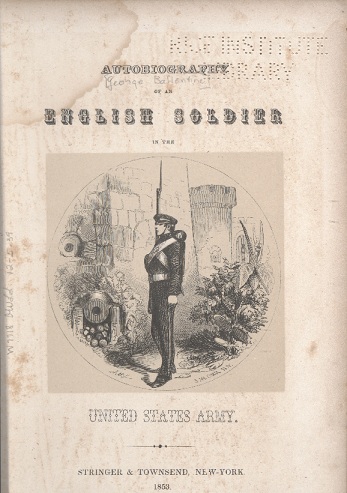| << Chapter < Page | Chapter >> Page > |
“I LEFT home for the United States in the summer of 1845, for the same reason that yearly sends so many thousands there, want of employment,” writes Scottish immigrant and English soldier George Ballentine. Throughout the 19 th and 20 th centuries, the U.S. received into its midst waves of immigrants from across the globe. Immigrant experiences like Ballentine’s were often related and recorded through the form of personal narrative and autobiography. Within these narratives, many immigrants continue to reference conditions in their homeland, creating a comparative structure that relates to transatlantic, trans-pacific, and hemispheric histories of circulation and migration. Ballentine’s immigrant experience was a specifically transatlantic experience which adopted hemispheric implications as a result of his travels throughout the U.S. Mexican borderlands. His Autobiography of an English Soldier offers a key way through which to highlight his history of immigration and introduce students to an important literary form: the personal narrative.
Autobiography of an english soldiers in the united states army

Teachers can begin by introducing Ballentine’s narrative as an example of a multilayered personal narrative that represents genres of autobiography and immigration. Personal narrative, as Jonathan Arac argues in The Emergence of American Literary Narrative, 1820-1860 , is founded upon displacement – pacific voyages, overland journeys to the frontier, slaves’ escapes, or immigrant, Atlantic journeys like Ballentine’s (76); however, this displacement is not only physical. It also occurs in the relationship between author and reader. Readers are urged to know the narrator, while realizing that there is a difference between the world in which they live and the world in which the narrator lived historically. More specifically, this difference pertains to how the narrative functions as a representation of historical experience and how the reader experiences that narrative as they read it (Arac 76). This distinction provides a key moment for teachers to help students learn about the internal world of a text. What do certain words, phrases, and experiences mean within Ballentine’s narrative? What do they mean in terms of the historical context, and what do they mean to us today? By showing students this process of translation, they can learn the complex layers through which literary narratives convey meaning.
Autobiography of benjamin franklin


Notification Switch
Would you like to follow the 'The atlantic ocean and hemispheric histories' conversation and receive update notifications?